Cahén avoided rough work in order to preserve the spontaneity of the first attempt:
"I do many sketches before starting a painting, but in my illustrations I rarely make such preliminary drawings. In fact, much to the dismay of art directors, my "roughs" are usually so sketchy that I can't make them out myself. What I do is to start my finished drawing with a hard pencil right on the board, then I ink in the final design and erase the pencil marks which made up the initial draft. Thus, by eliminating first roughs, I feel I am able to retain in the completed illustrations the full quality of the initial enthusiasm. As for media used, I mix my techniques as subject or purpose dictates…."
It is interesting that of the very few sketches that are preserved, each shows a different style and medium.

For “A Cage for the Birdman" Cahén coated his board with thick white paint, then drew over that with black ink. There is no white paint over the black...
 Maclean’s, 1954
Maclean’s, 1954... to make white highlights Oscar literally carved away black ink in cross-contours to reveal the white beneath, shaping the forms as a sculptor would.
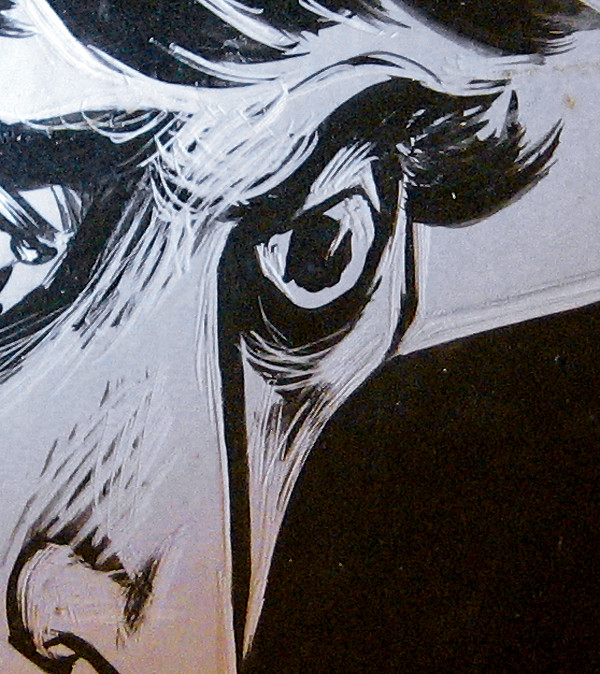
"A Cage for the Birdman" also affords us an opportunity to examine Oscar Cahén’s formidable mastery of the art of spot colour printing. There are only four inks—cyan, magenta, yellow, and black—used to create secondary colours green, brown, purple, and orange. The fact that all four process colours were used indicates that Cahén could have submitted full colour art. Instead, he used flat spot colours to intentionally achieve a desired effect. The final illustration is not simply black and white art with some hues thrown in for fun—it is colour artwork, designed that way from the start and rendered using the ink and press as the “paint” and “brush.”
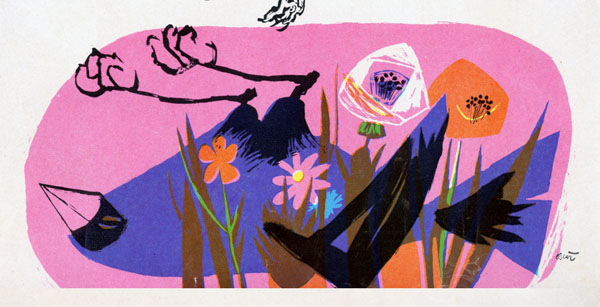
Oscar Cahén developed his aesthetic repertoire through illustration in technical and iconographic ways, reflecting on the relationship between the verbal, the non-verbal, and the visual. He then switched hats and allowed that internalized knowledge to come out in a different way in abstract painting, as a member of the Toronto collective of abstract artists called Painters 11. Unlike for his illustrations, Cahén made rough drawings for his abstract paintings and reworked them over and over.
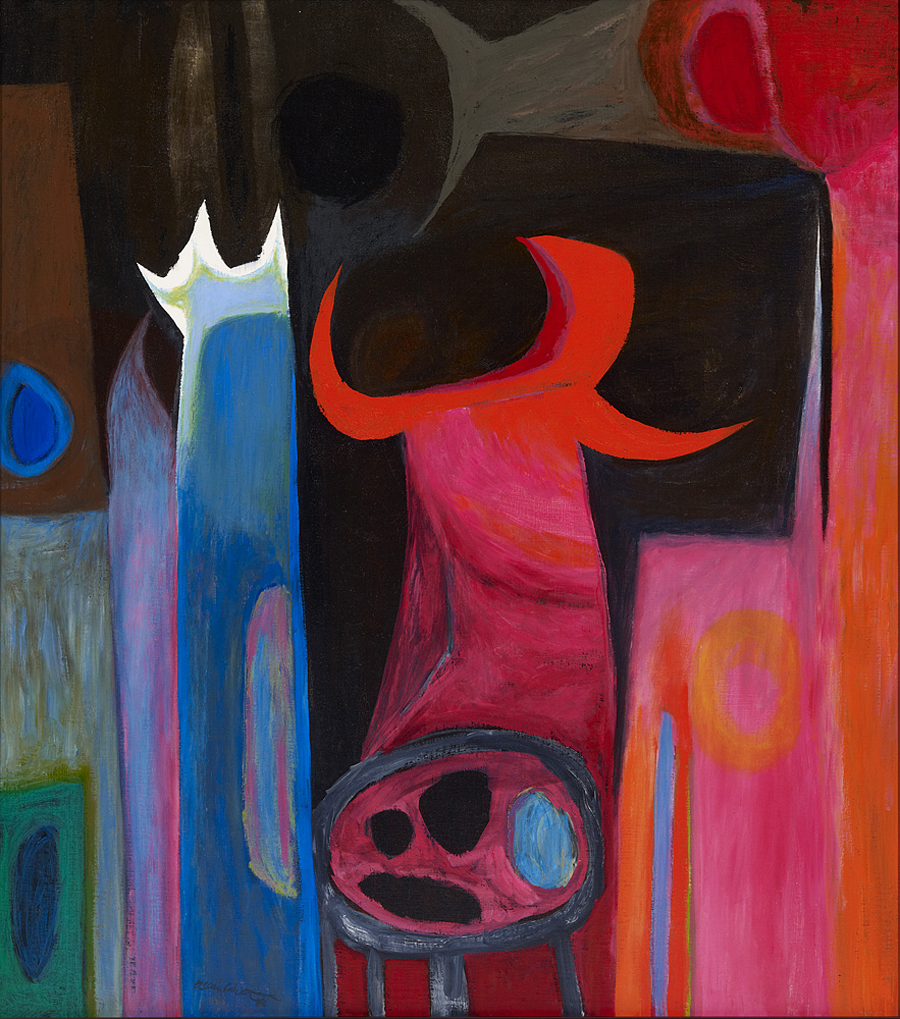 Subjective Image
Subjective Image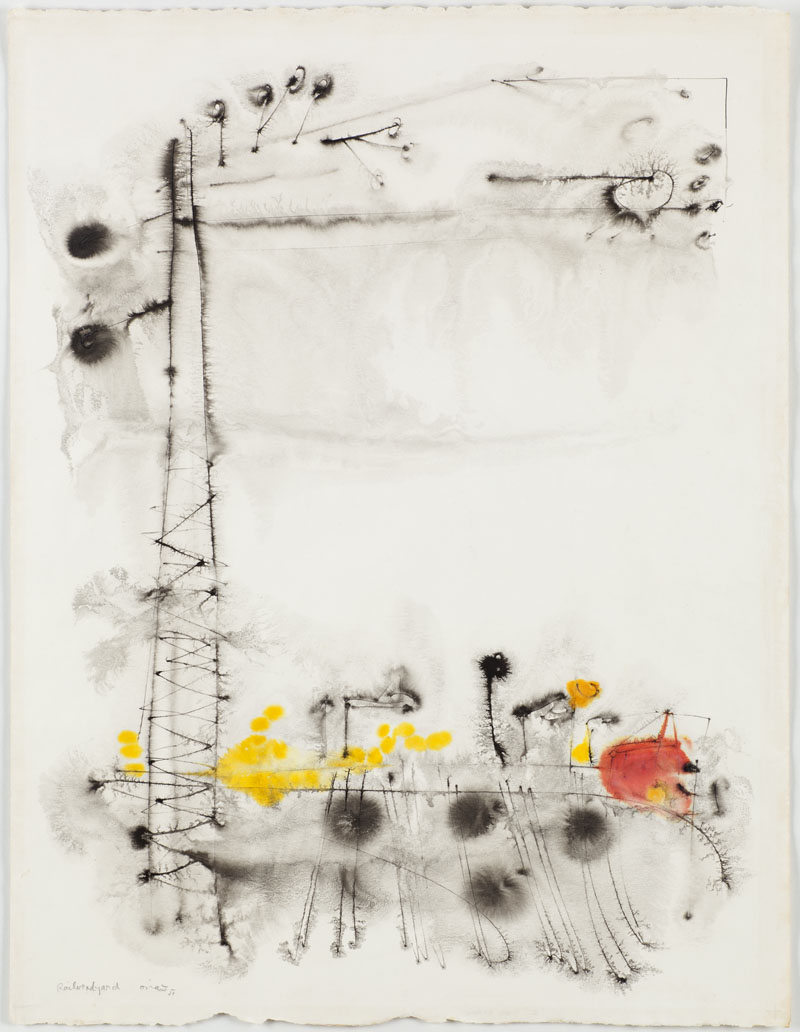 Railroad Yard
Railroad YardExpressing non-verbal feeling in the visual was always uppermost in Cahén’s intentions as an illustrator; abstraction simply stripped away the nameable, verbal layer to leave behind that lurking pure sense. Art theorist Meyer Schapiro has said that the New York abstract expressionists didn’t care about communicating with an audience. As an expert in visual communication, Cahén differed from them in that he knew quite well that even unfamiliar symbols were not devoid of meaning, and he asserted that his paintings were “a search for faith, and an escape from loneliness through communication.”
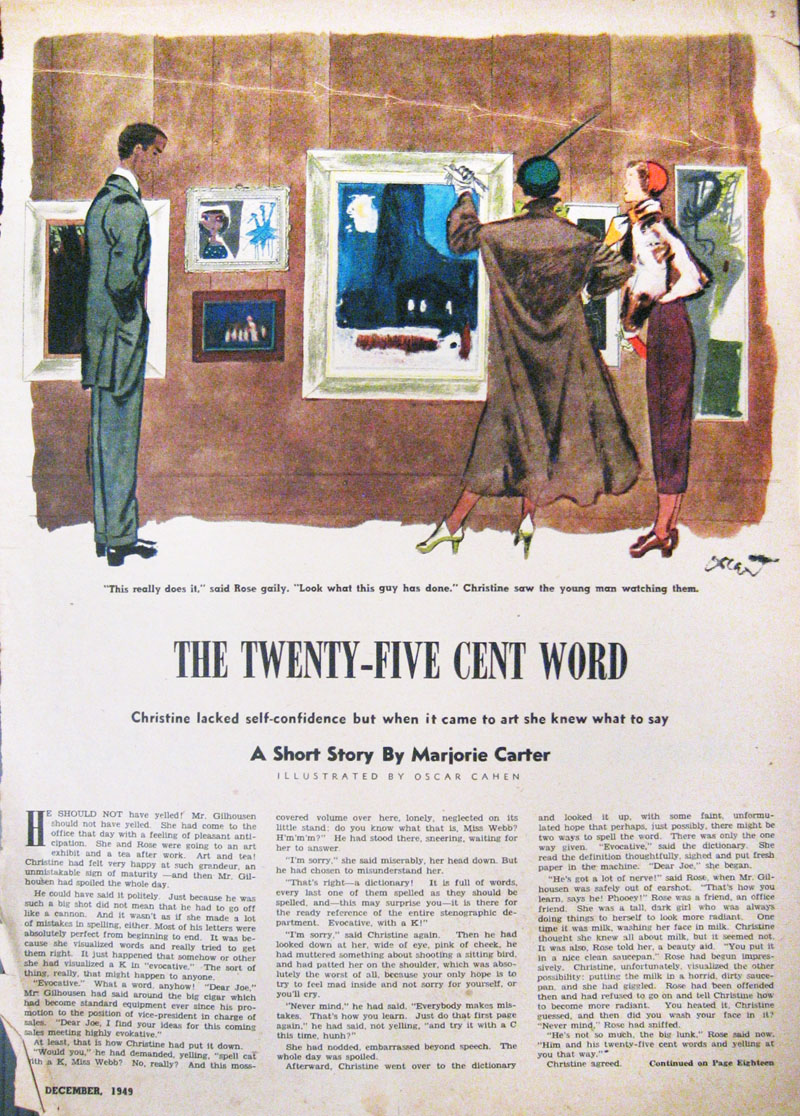 New Liberty, 1949
New Liberty, 1949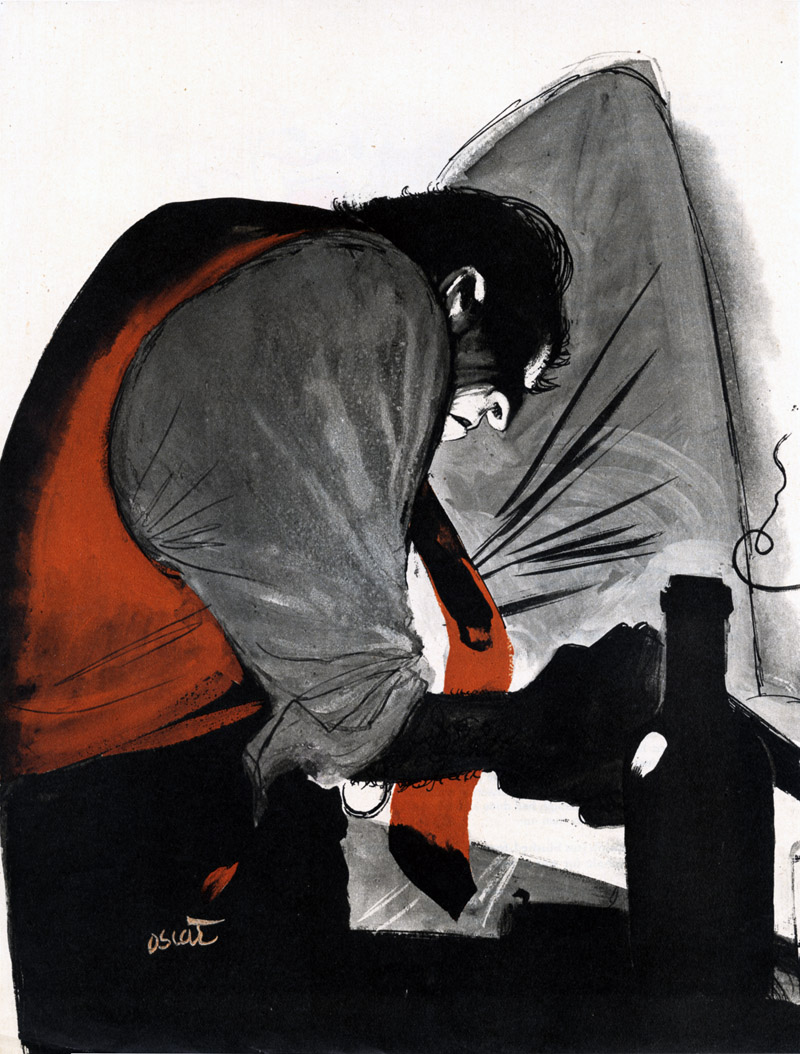 We don’t know where this image appeared. If you do, contact The Cahén Archives.
We don’t know where this image appeared. If you do, contact The Cahén Archives.From oral histories and a few speeches that were luckily recorded, we know that Cahén had more influence on his peers in the graphic arts than almost any other Canadian illustrator up to at least 1960. In art director Stan Furnival’s estimation:
"There isn’t any doubt that he was the greatest single force in Canadian illustration since Jefferys. He revitalized the whole business of illustration in Canada and encouraged a lot of good people to stay here and work here. He brought an academic art training to his illustrations—which, combined with a sense of freedom and vitality, radically changed a tight slick Americanized attitude almost overnight."
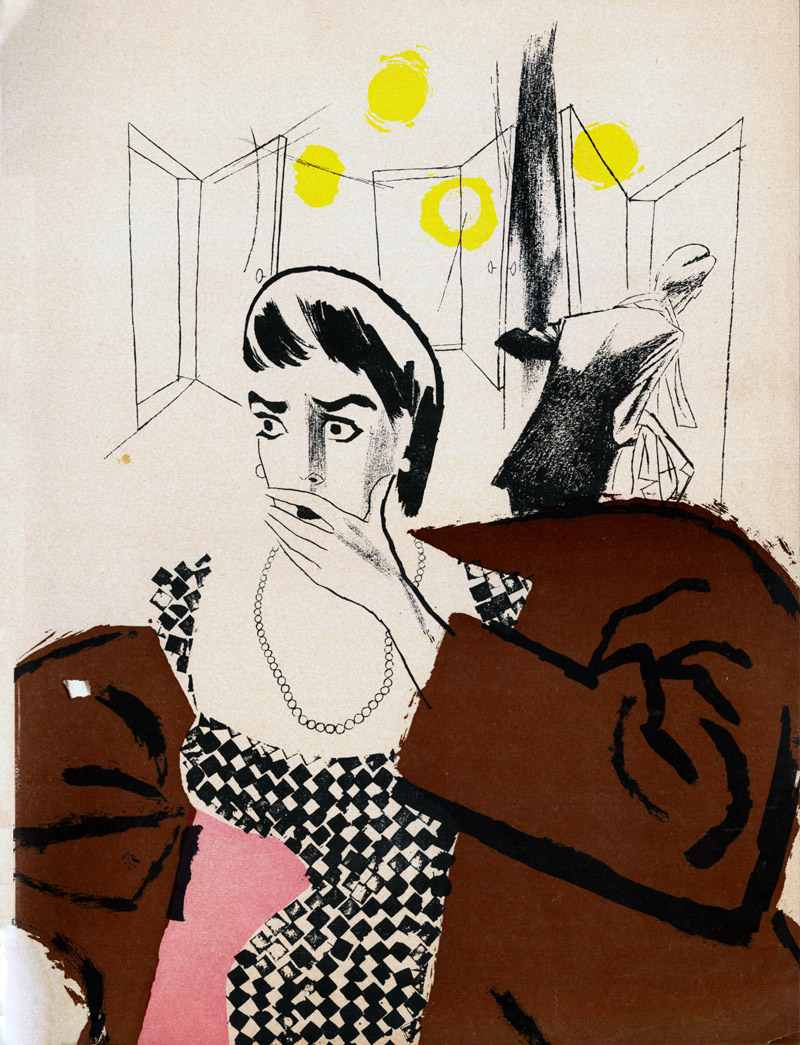 We don’t know where this image appeared. If you do, contact The Cahén Archives.
We don’t know where this image appeared. If you do, contact The Cahén Archives.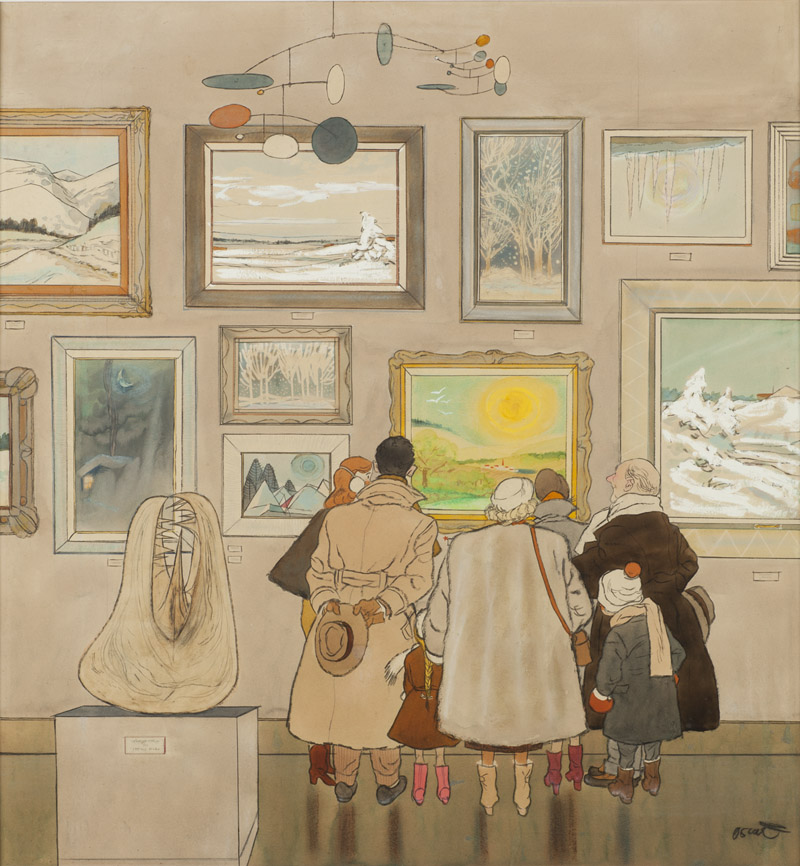 Original art for a Maclean’s cover
Original art for a Maclean’s coverTom Hodgson, a Painters 11 member and friend of Oscar’s, wrote:
"Oscar Cahén was the major impact in two areas, advertising and painting... Nothing even close to his impact has happened since... for many people, Oscar was their beginning."
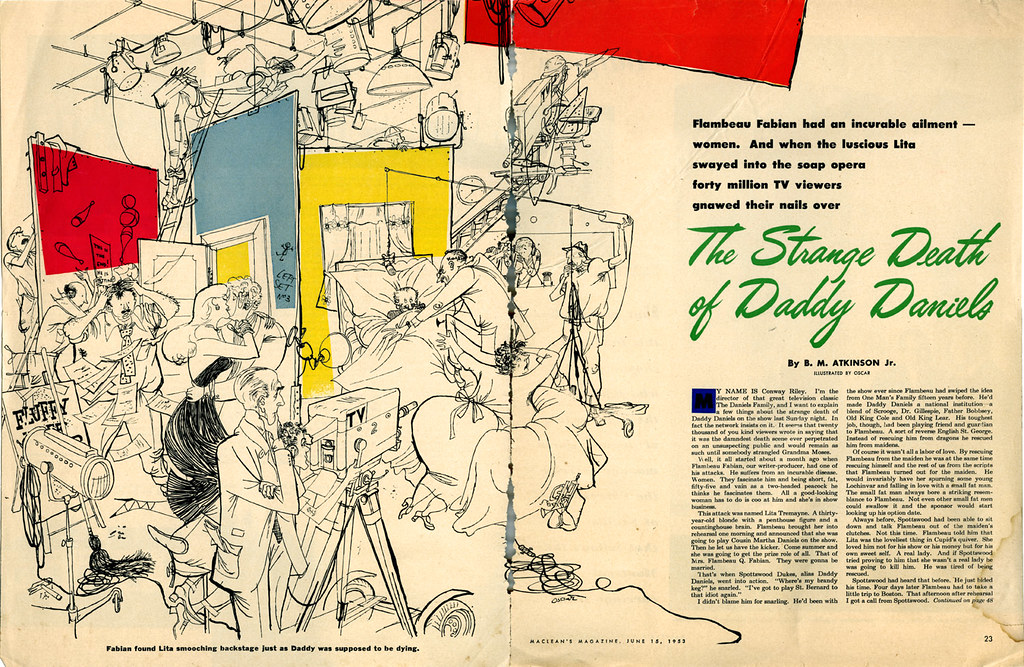
* The first exhibition of Oscar Cahén’s illustration since his lifetime will be shown in New York at Illustration House in October 2011 (opening night Oct. 1). With Roger Reed, I have written a full colour catalogue with an essay and over 60 images. In this series of posts about Cahén, I will introduce him and feature some artwork that will not appear in the show, catalogue, or websites. The tearsheets and originals here are from Oscar Cahén’s estate, courtesy of his son Michael Cahén at The Cahén Archives ~ Jaleen Grove






0 comments:
Post a Comment